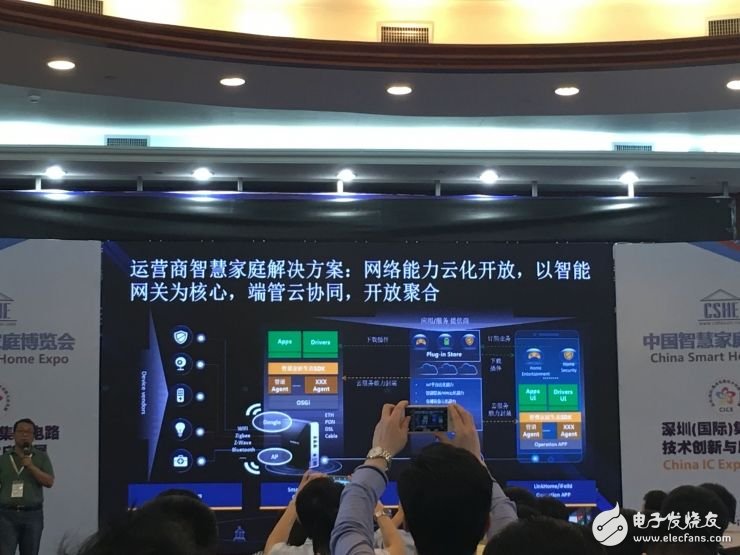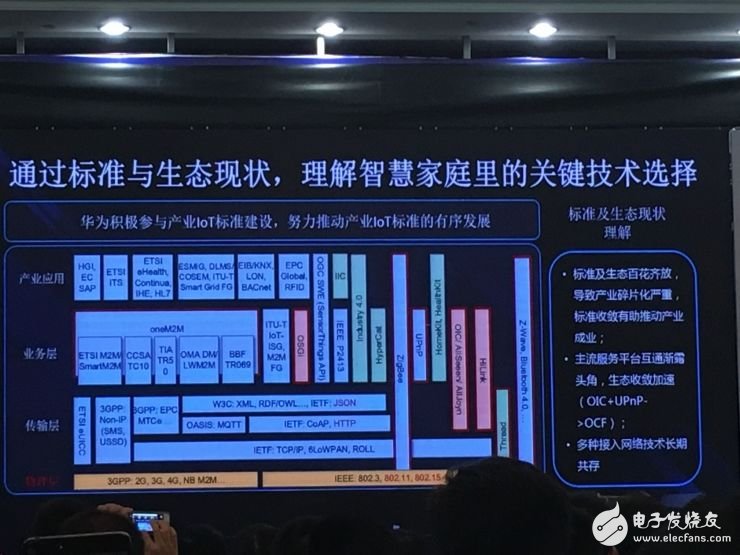On the weekend, the 2016 China Smart Home Expo (CSHE) was held in Shenzhen. Huawei launched its OpenLife Smart Home Program and presented the public with a “family network†of smart homes and even the Internet of Things: relying on operators to connect the home network cloud Open up and promote the construction of international 5G communication standards to create a smart family ecology. In the model described by Huawei, Lei Feng Network seems to have not only seen a "China Cisco", but also its desire to unify the wisdom of the family and even the Internet of Things.
Huawei's cloud is a cloud that covers the entire sky.
At the forum, Huawei's OpenLife project proposed a smart home carrier solution. The project's general manager Zeng Xiaolong said that the so-called carrier solution is: relying on the cooperation of operators, the network capabilities are clouded and open, with intelligent gateway as the core. , end-pipe cloud collaboration, open aggregation.
Unlike the software-oriented cloud services such as Alibaba Cloud, in the "operator + cloud platform" mode, Huawei considers the way in which smart home hardware devices, gateway operating systems, and service platforms (operators) are interconnected. The inevitable choice to build an open ecology. In this ecosystem, by providing intelligent gateways, Huawei plays the role of providing gateway open platform OSGI (Open Service Gateway Protocol), and on the other hand, providing various SDKs and open intelligence for device vendors and developers. Interfaces such as API, security protection API, and storage API are set, and then imported into the global carrier's operational services (connecting millions of homes).

To put it simply, in the cloud business, Huawei provides two service methods. One is to provide hardware infrastructure, that is, to sell hardware products, to help operators build various clouds. The second provides various resources such as computing resources and storage resources, and the operator can carry out its own service business. Zeng Xiaolong said that under the integration of OpenLife, traditional equipment suppliers entering the Internet of Things do not need to change hardware, only need to develop adaptive drivers, they can be integrated within two weeks. Among them, Huawei has to integrate even APP. Imagine if all the furniture equipment in the future is connected to the Internet of Things, and each application corresponds to an app, which is more troublesome than finding the remote control as a whole. To this end, Huawei has proposed a platform for integrating various types of mobile phone apps. Developers and even an H5 can let users control smart homes.
It's easy to think of it - Cisco - In the development of cloud strategy, Cisco's cloud service is built on the intelligent network core infrastructure, and provides data center, virtualization for cloud business and service deployment. Technology and product solutions, as well as the development and promotion of collaboration, video and other applications, help operators, enterprises and government agencies to establish an unprecedented cloud service platform to achieve a more efficient public service level.
In 1984, Cisco's founder, the computer center of the Stanford University computer department, Leonard Bosack, designed the "multi-protocol router" networking device to integrate the incompatible computer LANs. A unified network - this connected device is considered a true sign of the Internet age. Then, from the perspective of infrastructure, will Huawei become the next generation of Unicom Internet of Things companies?
Promote the transformation of operators and the lifeblood of IoT communication
However, the greater ambition than the decisive battle for Cisco is that Huawei has been seeking to develop a global unified 5G communication standard and the industry standard of the Internet of Things industry in promoting the network cloud opening of intelligent gateways. At present, the industry standards and the ecological blossoms have led to serious fragmentation of the industry, which is also a major factor hindering the application of smart home applications. Then, the interoperability of a mainstream service platform will undoubtedly accelerate ecological convergence. However, this requires the cooperation of operators.
As a dominant position in the home network, as a traditional information service provider, operators have unique advantages: on the one hand, E2E protection with user experience, operators not only have user-oriented capabilities, but also end-manage cloud resources. Guarantee end-to-end network experience; second, high-coverage offline resources, operators and Internet companies have rich user resources, but for new technologies such as the Internet of Things, sales and service support are more dependent on offline resources. Large, the advantages of operators are more obvious.
However, Huawei's rotating CEO Guo Ping once said that before the arrival of 5G, operators need to transform and develop, the network architecture should change, and the business model should be diversified.
Indeed, in recent years, global operators have been talking about NFV (Network Function Virtualization), a network evolution technology initiated by 13 Top operators in 2012. Operators hope to use this technology to decouple hardware and software, hardware generalization, On the basis of resource virtualization and management cloudization, the telecommunications network architecture is more open and agile, speeding up the business online speed, accelerating business innovation, and improving operation and maintenance efficiency and reducing operating costs. In this session, Huawei proposes that they can meet the requirements of NFV open and open source through layered decoupling and DC-centric deployment, helping operators to build an open telecommunications network and realize ICT transformation.
At present, there is no free competition in the telecommunications market in China. If Huawei has technology, channels and resources, and the government intends to allow private capital to enter the communications industry, Huawei is the first participant.

Downward access to the underlying smart devices and applications with an open platform, and the introduction of operators with intelligent gateways and IoT communication standards. It seems that the Huawei in the middle layer is a big chess game. However, even if the operators form an excellent CP, even the most aggressive operators, 5G commercials will have to wait until 2020, and real large-scale deployment will take more time, not to mention the Internet of Things that are still in their own camps. Construction of industry standards. Then, does Huawei's "betting" final result be fulfilled, let it lead the 5G standard, take the position of discourse and patent dominance, and realize the dream of hegemony?
Randm Tornado 7000 Vapes,Original Randm Tornado 7000,Randm Tornado 7000 Disposable Vape
Longhua Manxueling Trading Company , https://www.mxlvape.com